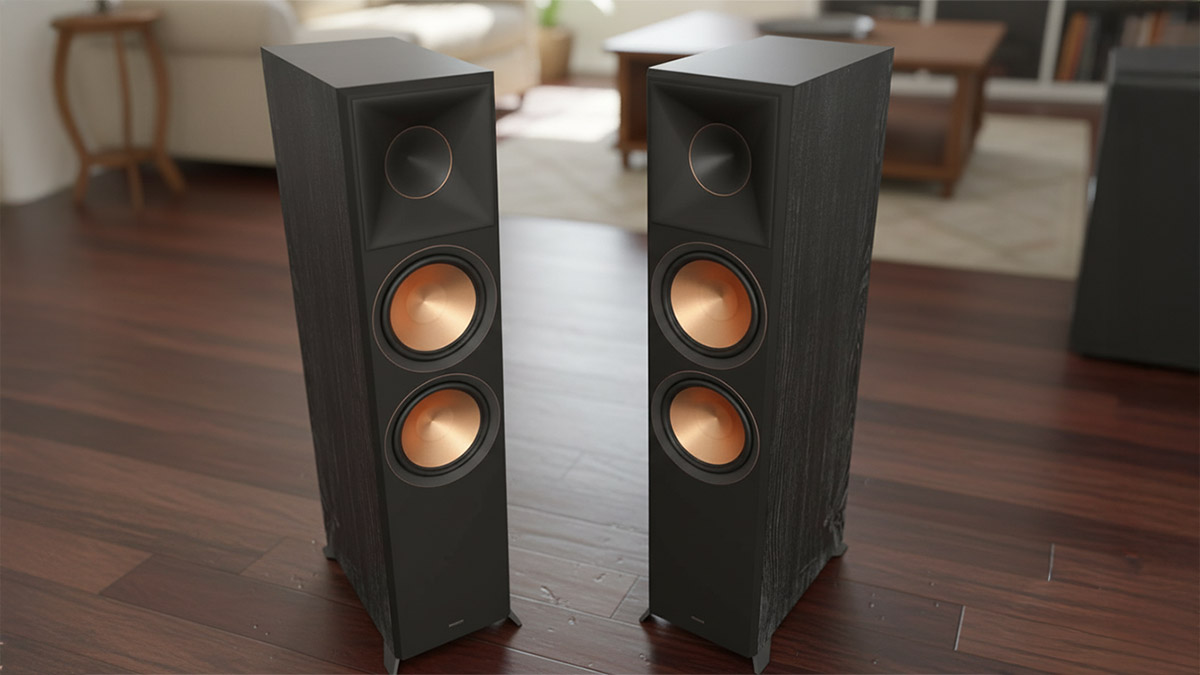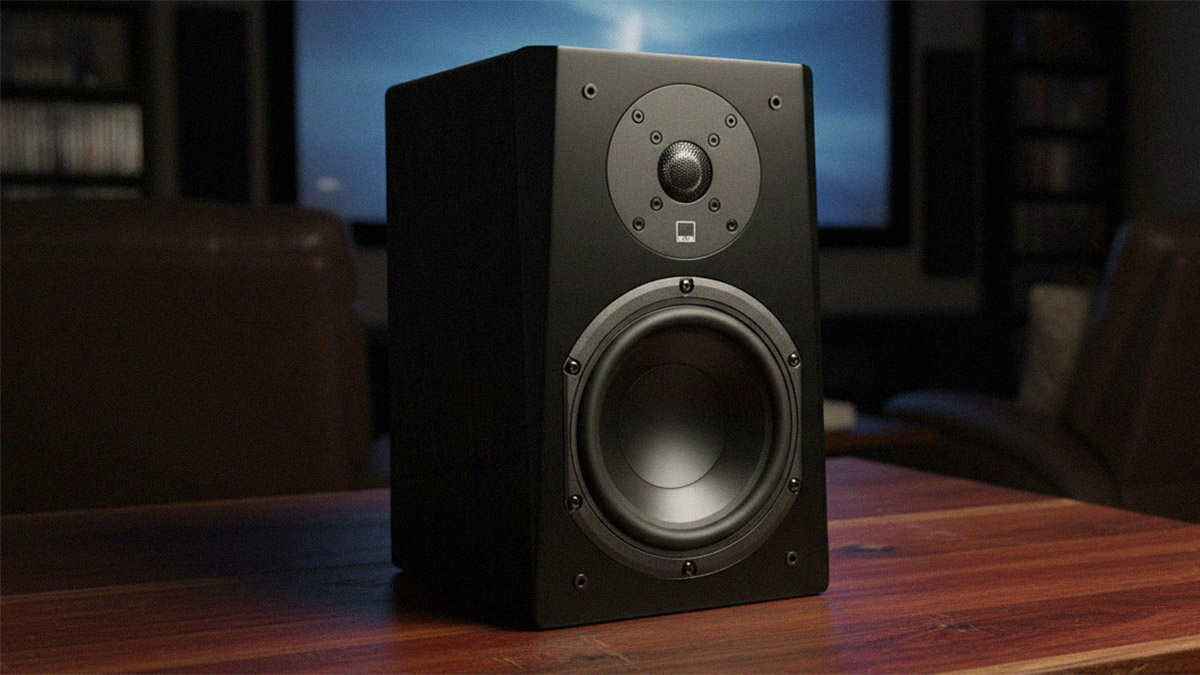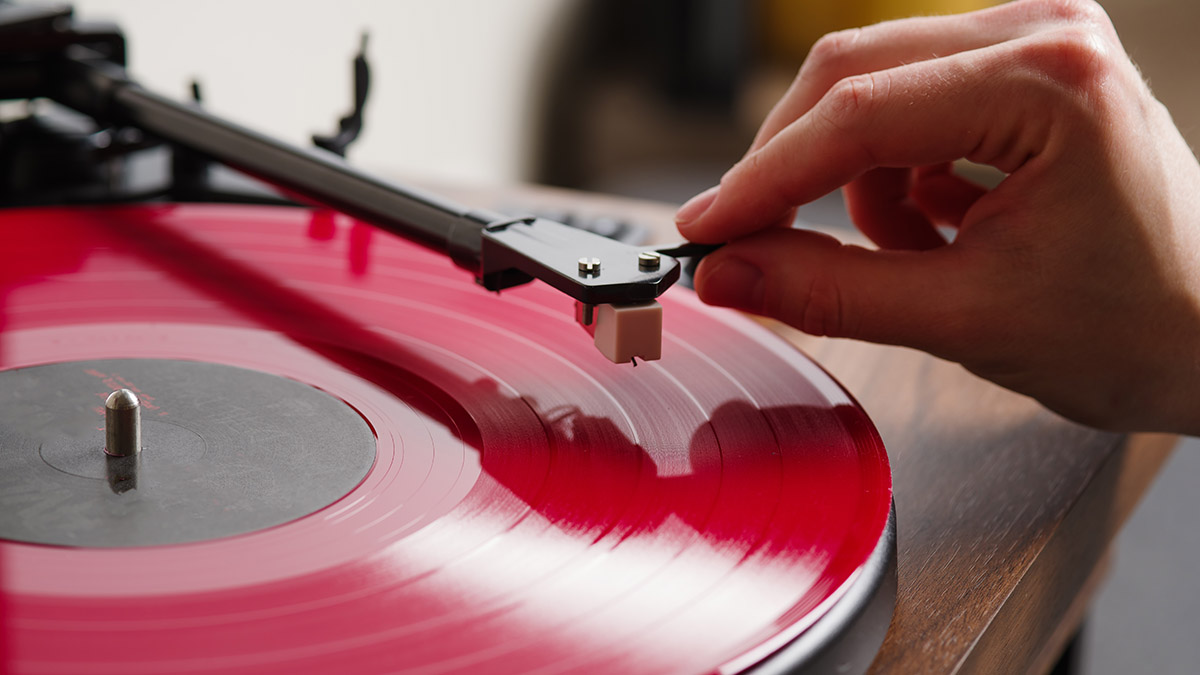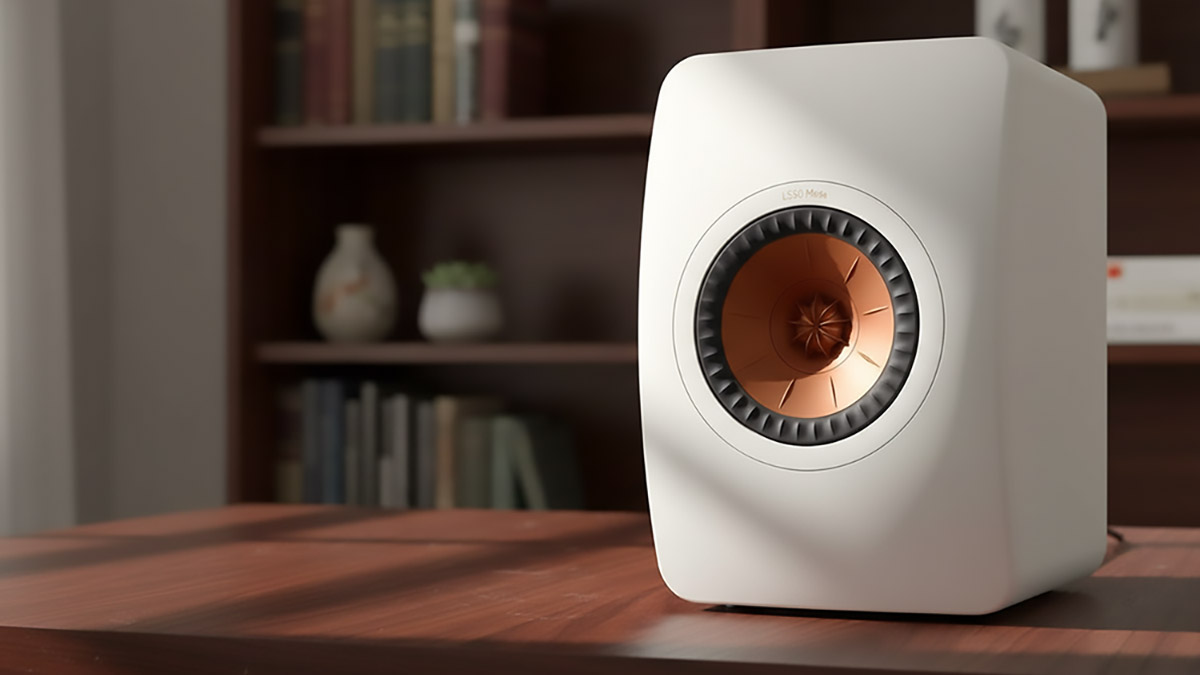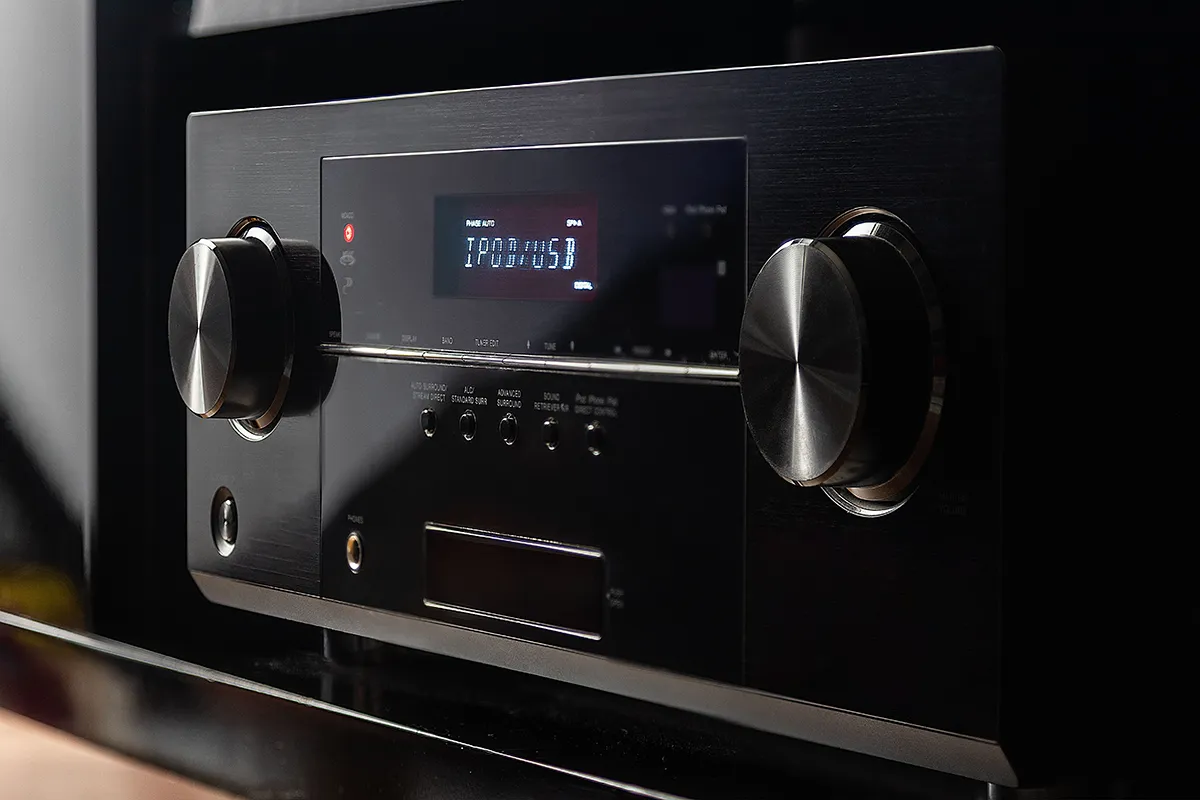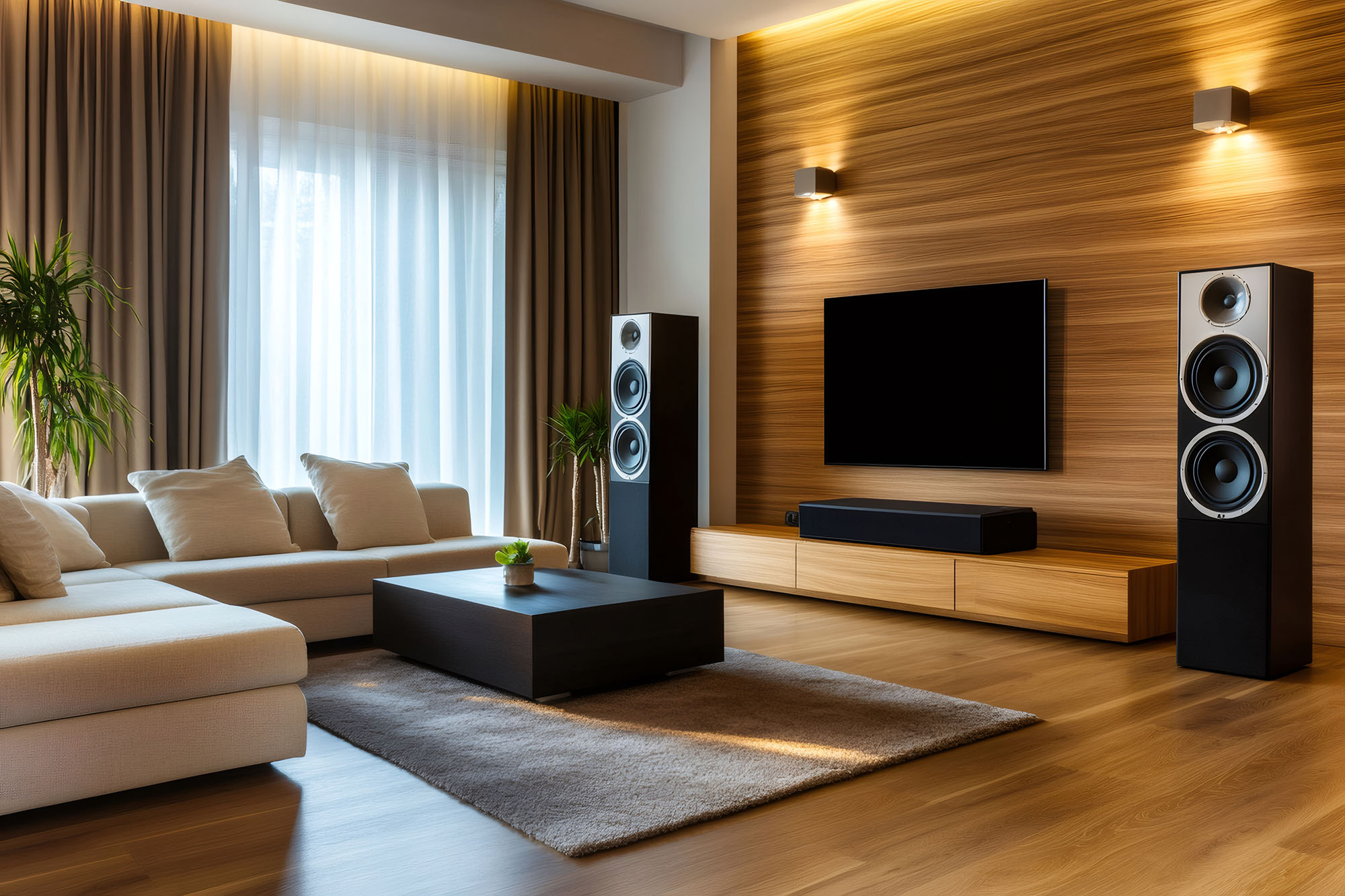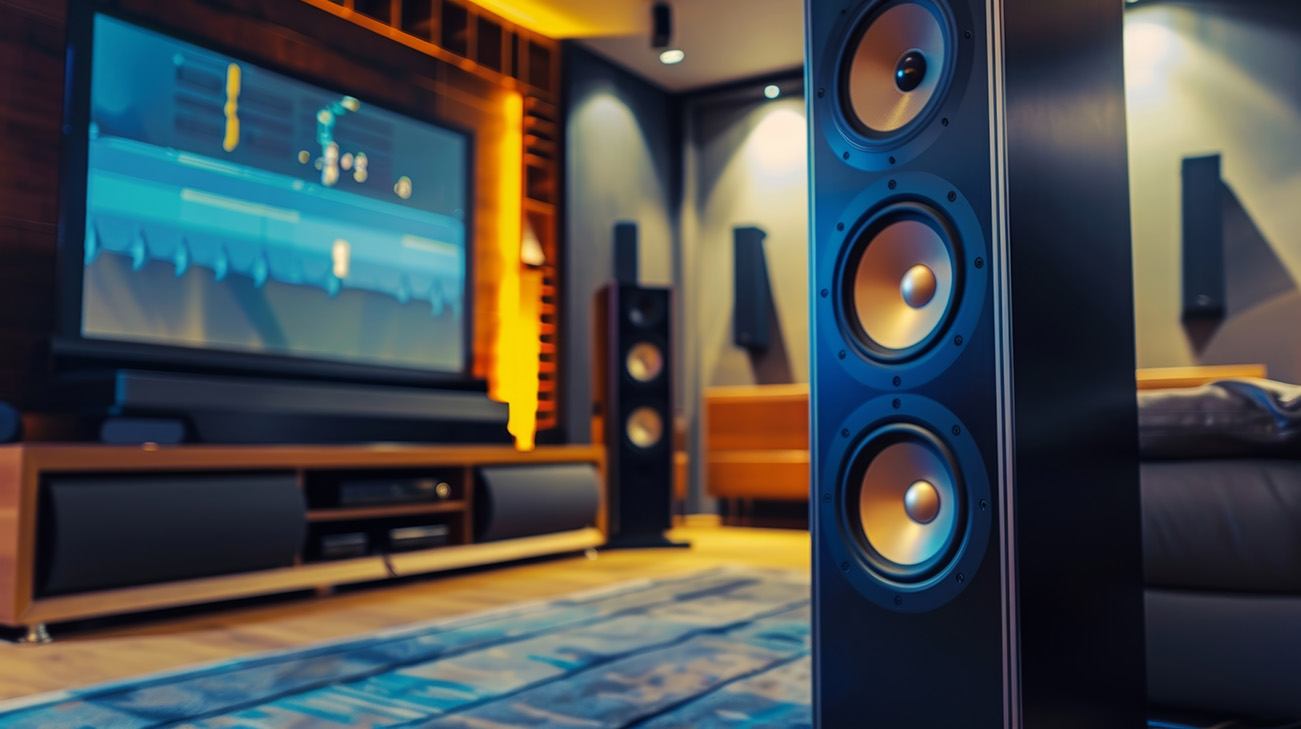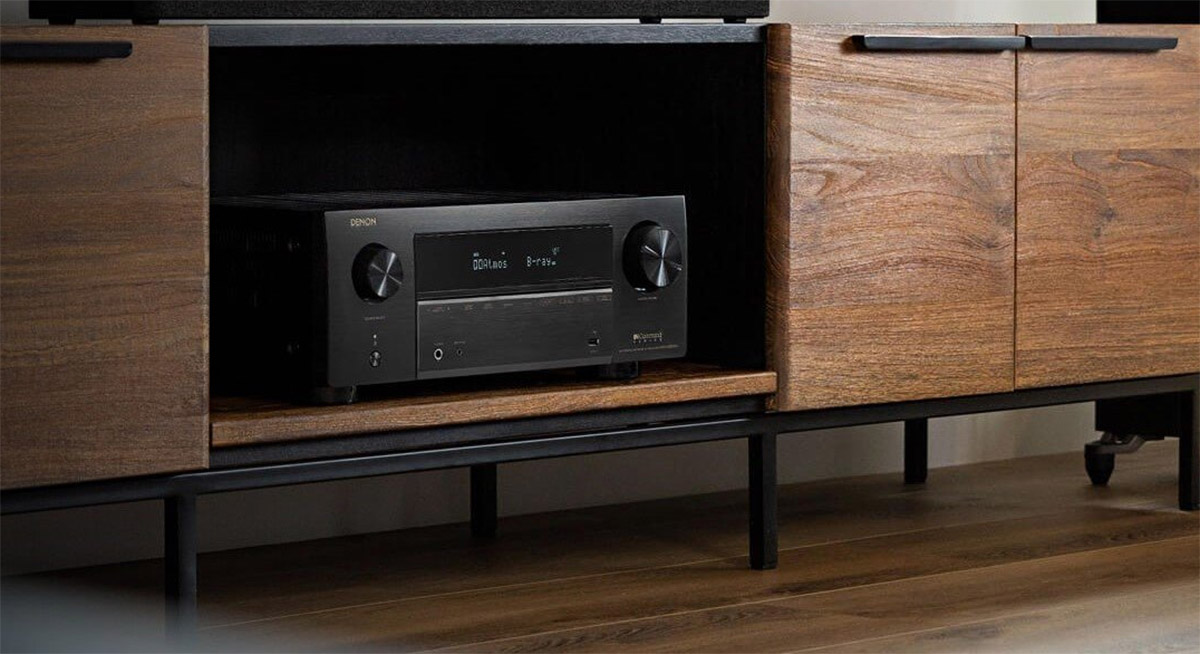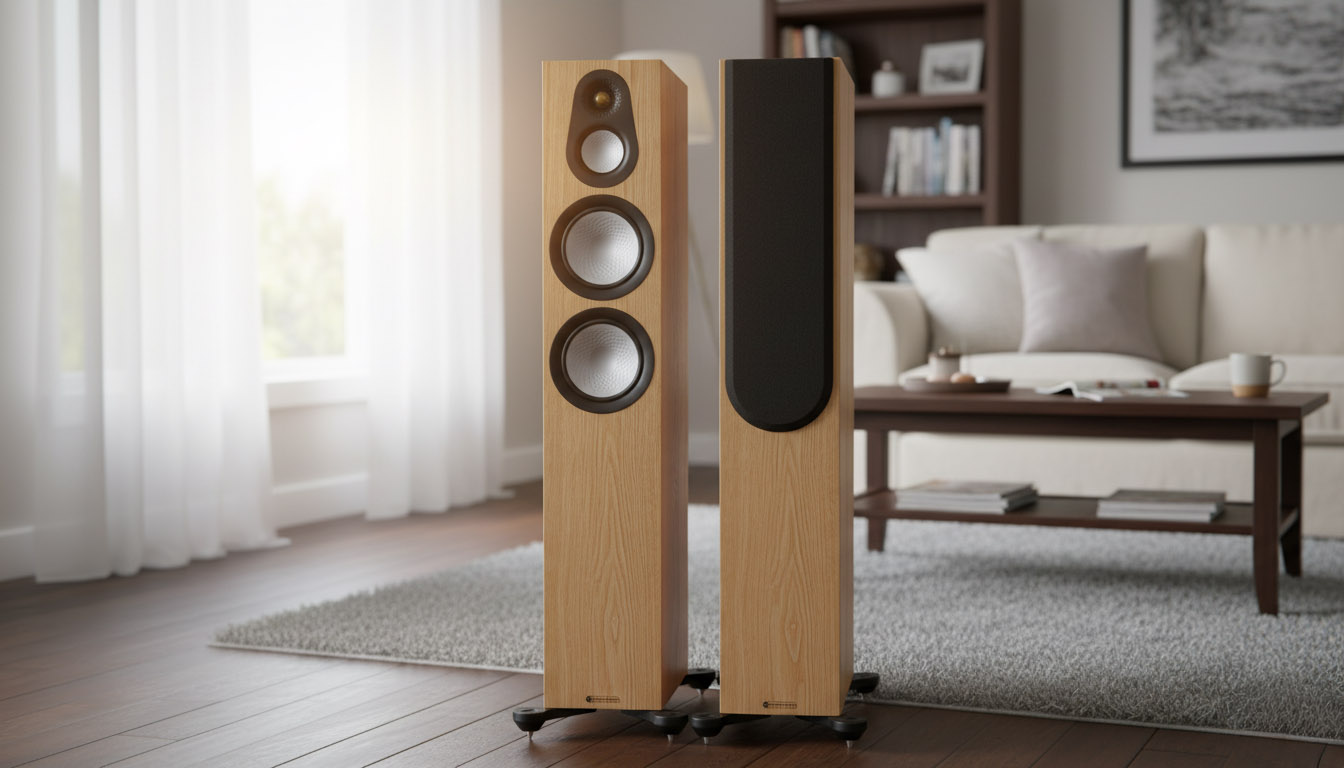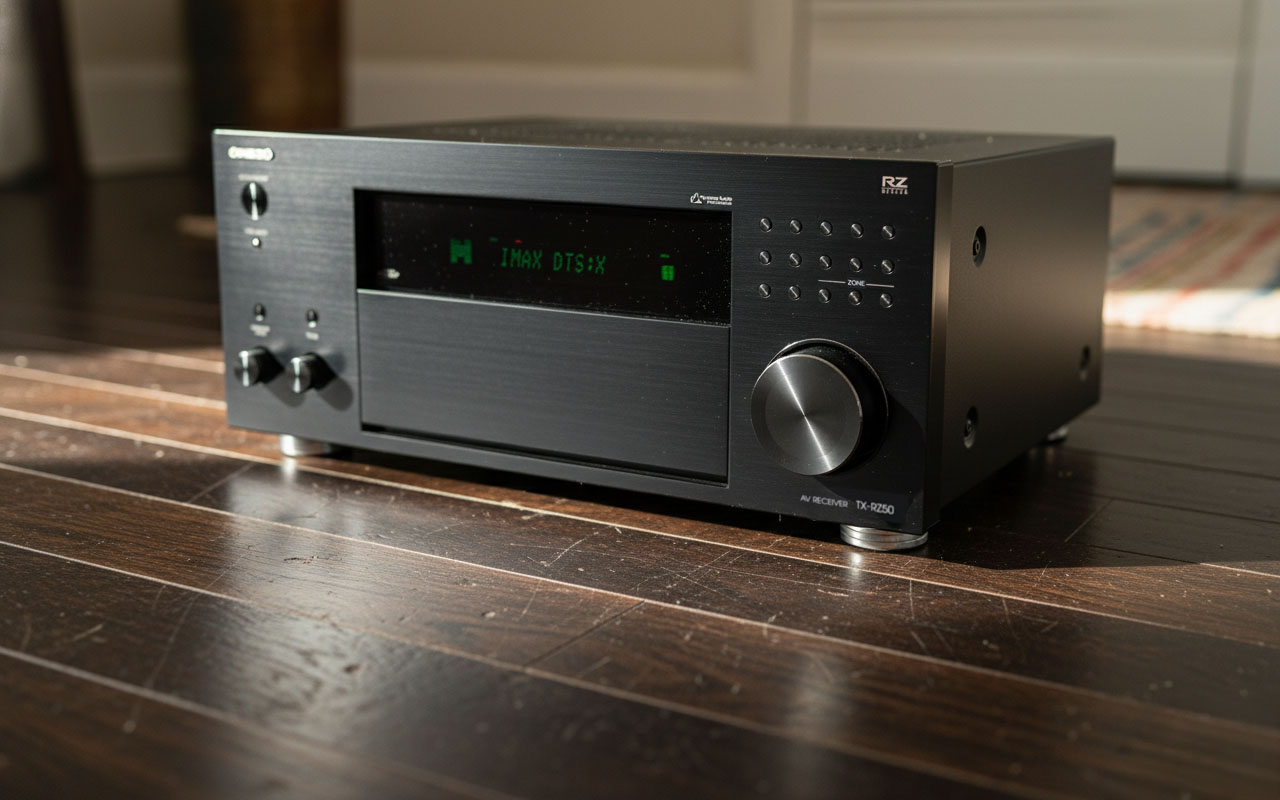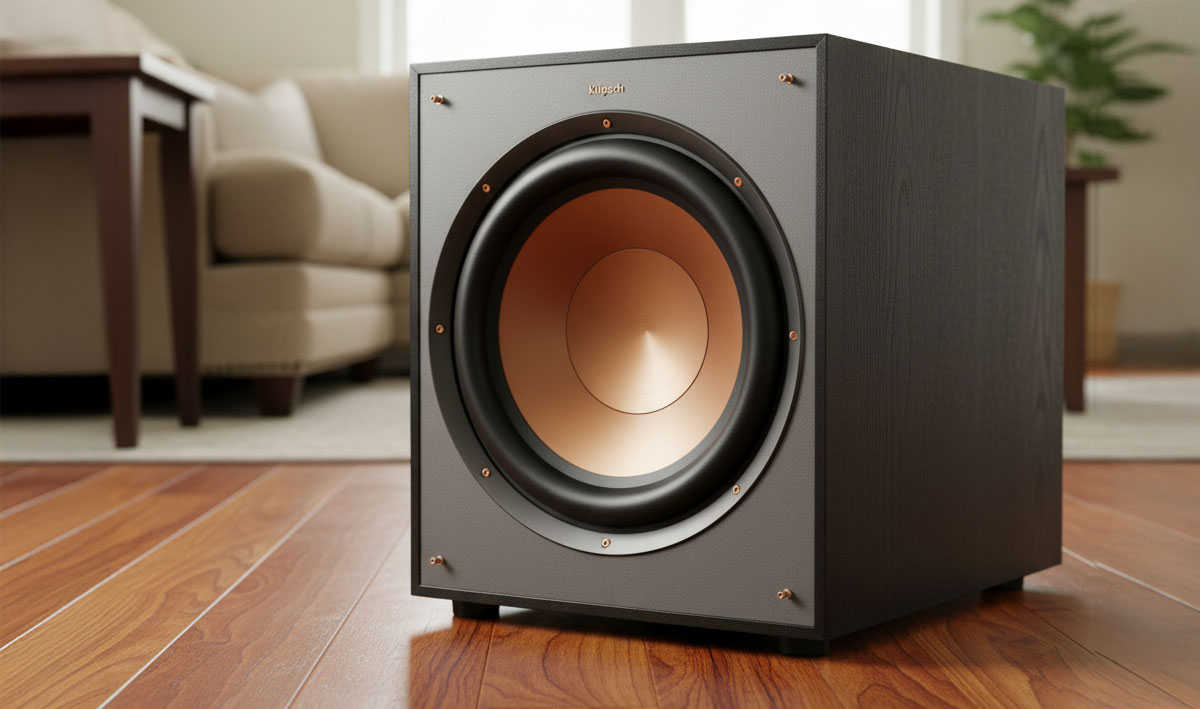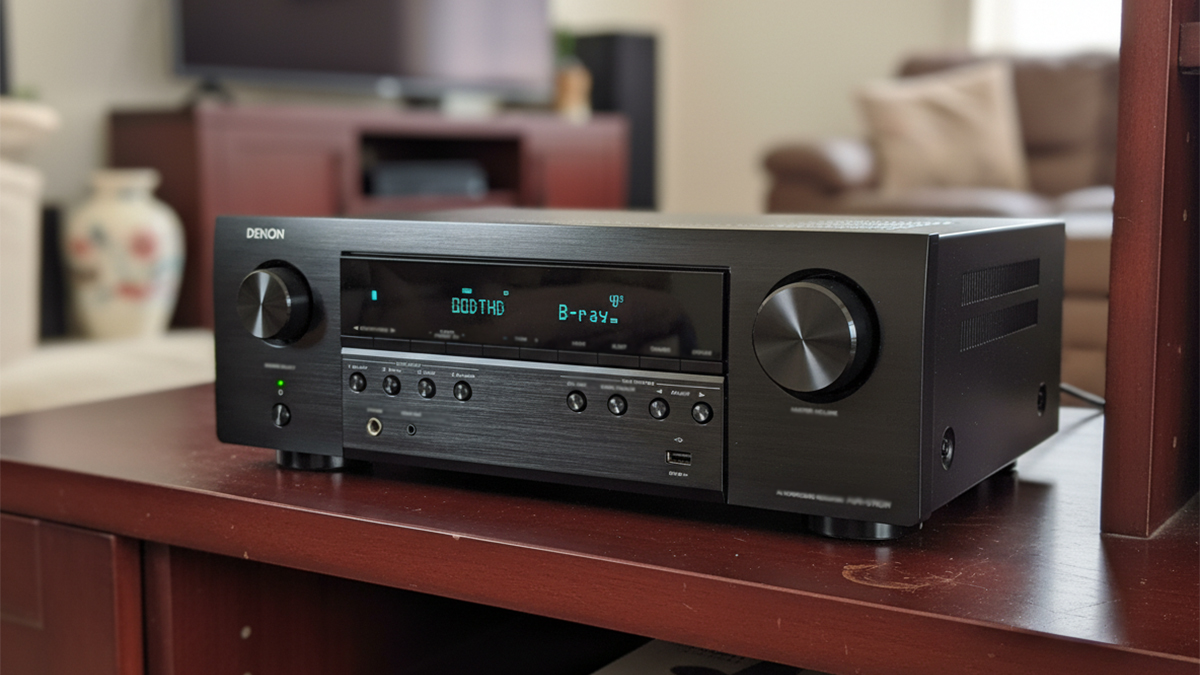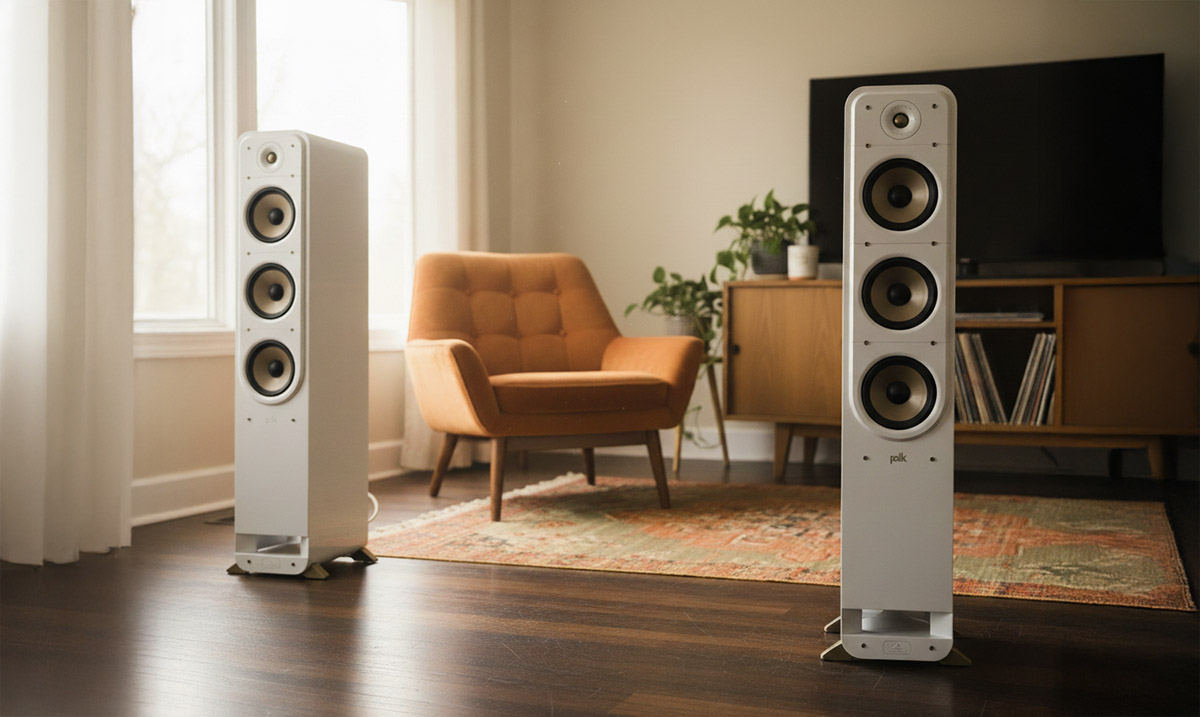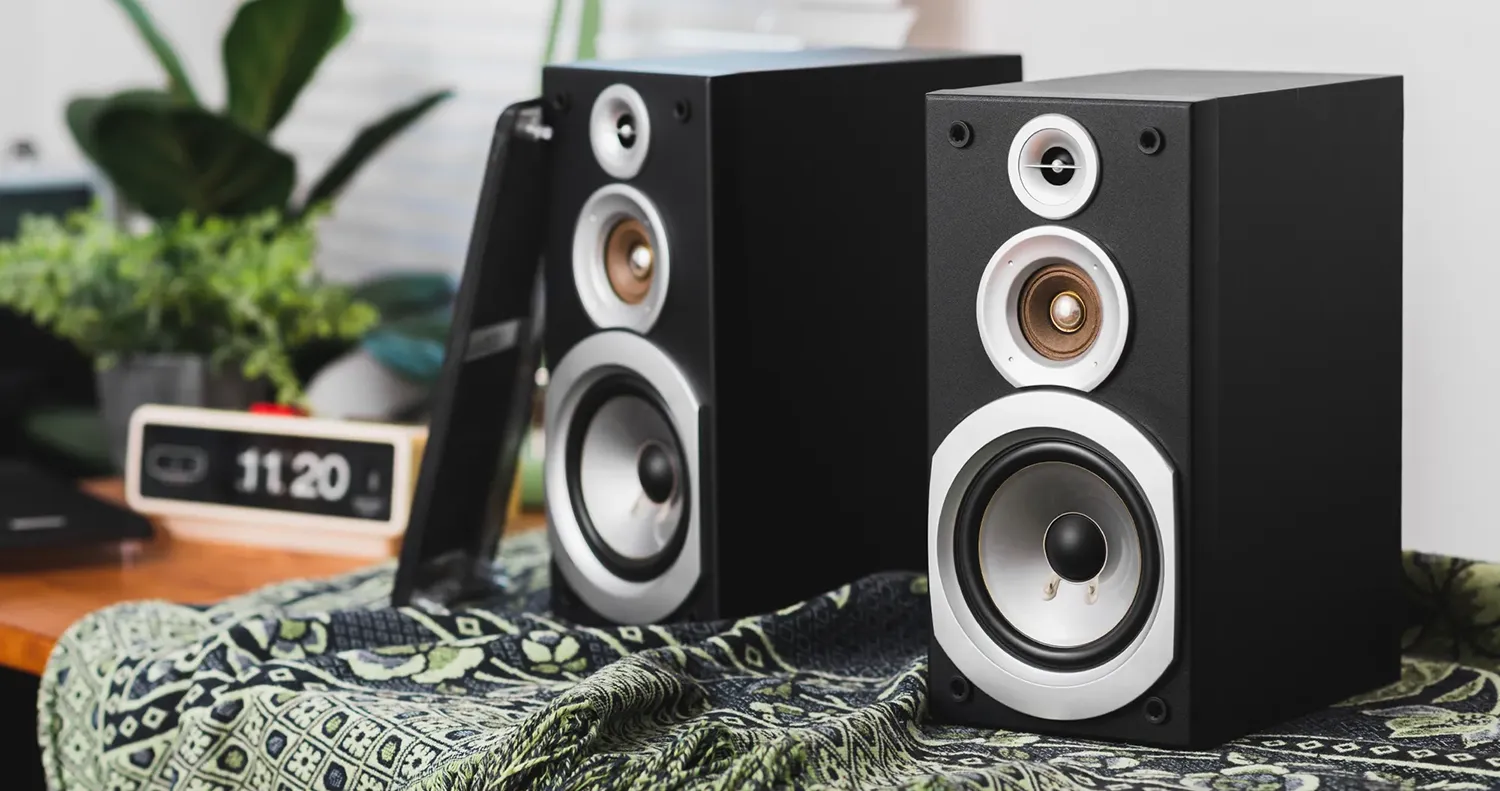Quick Take
The Klipsch Reference Premiere RP-8000F II is the kind of tower that makes movie night feel larger than life without demanding exotic amps or fiddly setup. Owners call out lively dynamics, clear vocals, and bass weight that lets you listen happily even before adding a sub. A minority hear the treble as a bit hot in bare rooms, and the cabinets are large, so placement deserves a minute of care. But if you want front speakers that energize a space for both music and movies, these towers deliver with authority.
Pros & Cons
![]() Room-filling dynamics with clear, forward dialogue that cuts through action
Room-filling dynamics with clear, forward dialogue that cuts through action
![]() Easy to drive; plays loud with modest receivers thanks to high sensitivity
Easy to drive; plays loud with modest receivers thanks to high sensitivity
![]() Dual 8-inch woofers give convincing bass and body, even without a sub
Dual 8-inch woofers give convincing bass and body, even without a sub
![]() Crisp imaging and detail from the horn-loaded titanium tweeter
Crisp imaging and detail from the horn-loaded titanium tweeter
![]() Solid fit and finish that matches modern systems
Solid fit and finish that matches modern systems
Cons
![]() Cabinets are big and need breathing room to sound their best
Cabinets are big and need breathing room to sound their best
![]() Some listeners report bright highs in reflective rooms
Some listeners report bright highs in reflective rooms
![]() True deep-bass addicts may still prefer a subwoofer for the lowest octave
True deep-bass addicts may still prefer a subwoofer for the lowest octave
Introduction
Tower speakers have a tough job. They’re expected to anchor home theater duty one evening, then pivot to laid-back two-channel listening the next afternoon, all while fitting into real living rooms. The Klipsch Reference Premiere RP-8000F II sets out to be that confident, do-everything front speaker. It’s a two-way tower with a horn-loaded one-inch titanium tweeter and two eight-inch woofers, wrapped in a cabinet that’s more refined than previous generations. On paper the ingredients promise speed and scale. In owner feedback, the theme is similar: punchy dynamics, intelligible dialogue, and an easy match with common receivers.
Key Features (and why they matter)
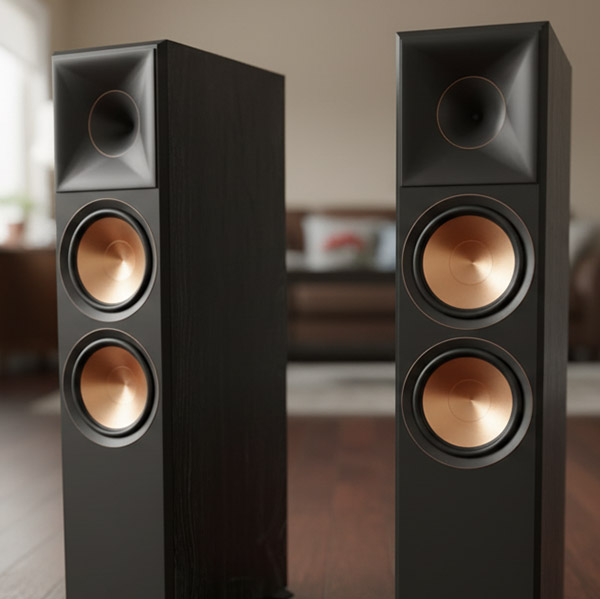
1″ Titanium LTS tweeter with hybrid Tractrix horn and vented design
Klipsch’s Linear Travel Suspension tweeter is built to reduce distortion at higher output. The larger, hybrid Tractrix horn focuses highs toward the listening area and away from nearby walls, which helps clarity in typical rooms. The vented tweeter housing lowers resonances for a cleaner top end, so cymbals and strings sound crisp rather than splashy when you turn it up.
Dual 8″ Cerametallic woofers with updated motor design
Lightweight, rigid Cerametallic cones move air quickly without flexing, while the revised motor system improves control. In practice that means kick drums hit with authority and bass lines stay tidy, yet vocals remain centered and uncolored. Many owners find these towers provide enough low end for music on their own, saving the sub for movie-night thunder.
Rear-firing, dual-chamber Tractrix ports
The bass-reflex enclosure vents through dual-chamber Tractrix ports on the back. This geometry helps move air efficiently and reduces port noise, so you get punchy, extended bass with fewer chuffs or boomy notes—provided you leave a bit of space behind the cabinets.
High sensitivity (98 dB @ 2.83V/1 m) and 8-ohm compatible load
Efficiency is a hallmark here. With a 98 dB sensitivity rating, the RP-8000F II plays loud on modest amplification from mainstream AVRs, yet it scales when you upgrade to more capable amps. That flexibility suits a system that may grow from a starter receiver to separates over time.
Wide frequency response and robust power handling
Rated at 35 Hz–25 kHz (±3 dB) with 150 W continuous and 600 W peak power handling, these towers cover most music with authority and keep headroom in reserve for cinematic peaks. You’ll get a convincing front-row feel in medium and even larger rooms before you worry about the very last half-octave.
Bi-wire/bi-amp ready with refined cabinet and finishes
Dual binding posts allow bi-wiring or bi-amping if you want to experiment down the road. The internally braced MDF cabinet, stable feet, and satin-finished baffle are not just for looks—they help suppress vibration and preserve detail while blending into modern living spaces.
Sound Quality and Setup
Listeners consistently describe the Klipsch RP-8000F II as lively and engaging, with vocals that project clearly and a soundstage that locks in when the speakers are slightly toed in. Several note they can enjoy full-bodied music without a subwoofer, especially in stereo setups; those dual eights move air in a way bookshelf speakers simply can’t. The overall impression is “big, theater-style energy at home,” which tracks with the high sensitivity and cone area.
That excitement comes with a caveat. In sparsely furnished or highly reflective rooms, a slice of users report that the treble can tilt bright on certain recordings. A few easy moves tame this without losing the signature snap: add a rug and curtains, back off toe-in a few degrees, or apply a light EQ shelf if your receiver allows it. When buyers felt the speakers lacked warmth, those same fixes—plus careful spacing from back and side walls—typically brought balance back.
As for bass complaints, the rare comments about “not enough bass” usually trace back to placement or expectations. Large, open-plan rooms swallow energy, and towers set far from boundaries will sound leaner. Sliding each speaker a few inches closer to the wall or slightly narrowing the spacing can restore weight. Once dialed in, many owners turn off their subs for music and only fire them up for action films that crave infrasonic impact.
Who Is It For?
Choose the RP-8000F II if you want front speakers that can pull double duty – slam for movies, finesse for albums, and you have the floor space for real towers. They’re a natural match for listeners who value dynamics and clarity, sit 8–12 feet from the speakers, and run them with a midrange AVR or integrated amp today but might upgrade amplification later. If your room is very reflective and you’re sensitive to treble energy, plan on some basic room treatments or consider a warmer-voiced alternative.
Tips for Better Results
Place the speakers so the tweeters sit near ear height and start with a modest toe-in that points just outside your main seat. Leave space behind the cabinets so the rear ports breathe—about 8 to 18 inches works well in many rooms. If the sound is too forward, reduce toe-in and add a rug; if it feels a little soft, toe-in more assertively until the center image snaps into focus. For music-first systems, experiment with slight asymmetry from walls to smooth bass. Home-theater owners should set fronts to “Small” with a 60–80 Hz crossover when using a sub; for pure stereo, let the towers run full range and adjust by ear.
Alternatives to Consider
If you like the Klipsch energy but want more depth and refinement for cinema, adding a Klipsch SPL-120 sub to these towers creates a formidable front stage. Prefer a warmer presentation? ELAC’s Debut Reference towers trade some immediacy for a smoother midrange. If space is tight, the Klipsch RP-600M II bookshelf speakers keep the horn clarity in a smaller footprint and can later expand into a full system with a sub. Shoppers in the same “big, dynamic tower” lane also cross-shop Polk’s Reserve R700 and SVS’s Prime Pinnacle, both respected for full-bodied bass and broad staging.
The Klipsch RP-8000F II thrives on making content feel alive. It doesn’t need boutique power to wake up a room, and it rewards a few minutes of placement care with vivid imaging and an effortless sense of scale. Yes, the cabinets are substantial and the top end can sound assertive in bright spaces, but those are manageable trade-offs for towers that bring concerts and blockbusters to life with such ease. If you’re building a front stage that can carry a system today and still scale with upgrades tomorrow, these speakers belong on your shortlist.
FAQ
Do the RP-8000F II need a powerful amplifier?
Not necessarily. Their high 98 dB sensitivity means a quality midrange AVR or integrated amp can drive them confidently. They’ll still reward better amplification as you upgrade.
Can I skip a subwoofer with these towers?
For music in small to medium rooms, many owners are satisfied without a sub. For home theater’s lowest effects, a sub still adds impact below the towers’ reach.
Are they bright?
Some listeners in reflective rooms find the treble a touch hot. Small adjustments—toe-in, seating position, and light room treatments—usually balance things out.
How big are they?
Each speaker is roughly 43.1 inches tall, 10.8 inches wide, and 18.3 inches deep, and weighs about 61 pounds. Plan adequate space behind and around them for the rear ports.
What’s new in the II version?
Refinements include a larger hybrid Tractrix horn with a vented titanium tweeter, updated Cerametallic woofers, improved ports, added cabinet bracing, and bi-wire/bi-amp connections with tidy Atmos passthrough.
Do they pair well with Klipsch center and surrounds?
Yes. They’re part of the Reference Premiere family, so timbre-matching with the series’ centers and surrounds is straightforward for a cohesive theater.
Will they fit in a small room?
They’ll work, but leave breathing room and temper toe-in to avoid sounding forward. In tighter spaces, consider the RP-600M II bookshelves.
What if I hear too little bass?
Try moving each tower closer to the wall in small steps, adjust toe-in, and confirm polarity. Large open rooms may still benefit from adding a subwoofer.
Are grilles included?
Yes, and they’re removable. Many listeners prefer the slightly more open sound with grilles off, but you can choose the look you prefer.
What’s the rated frequency response and sensitivity?
Frequency response is 35 Hz–25 kHz (±3 dB) and sensitivity is 98 dB @ 2.83V/1 m, with power handling of 150 W continuous and 600 W peak.
Teksignal.com participates in the Amazon Services LLC Associates Program, an affiliate advertising program designed to provide a means for sites to earn advertising fees by advertising and linking to Amazon.com

